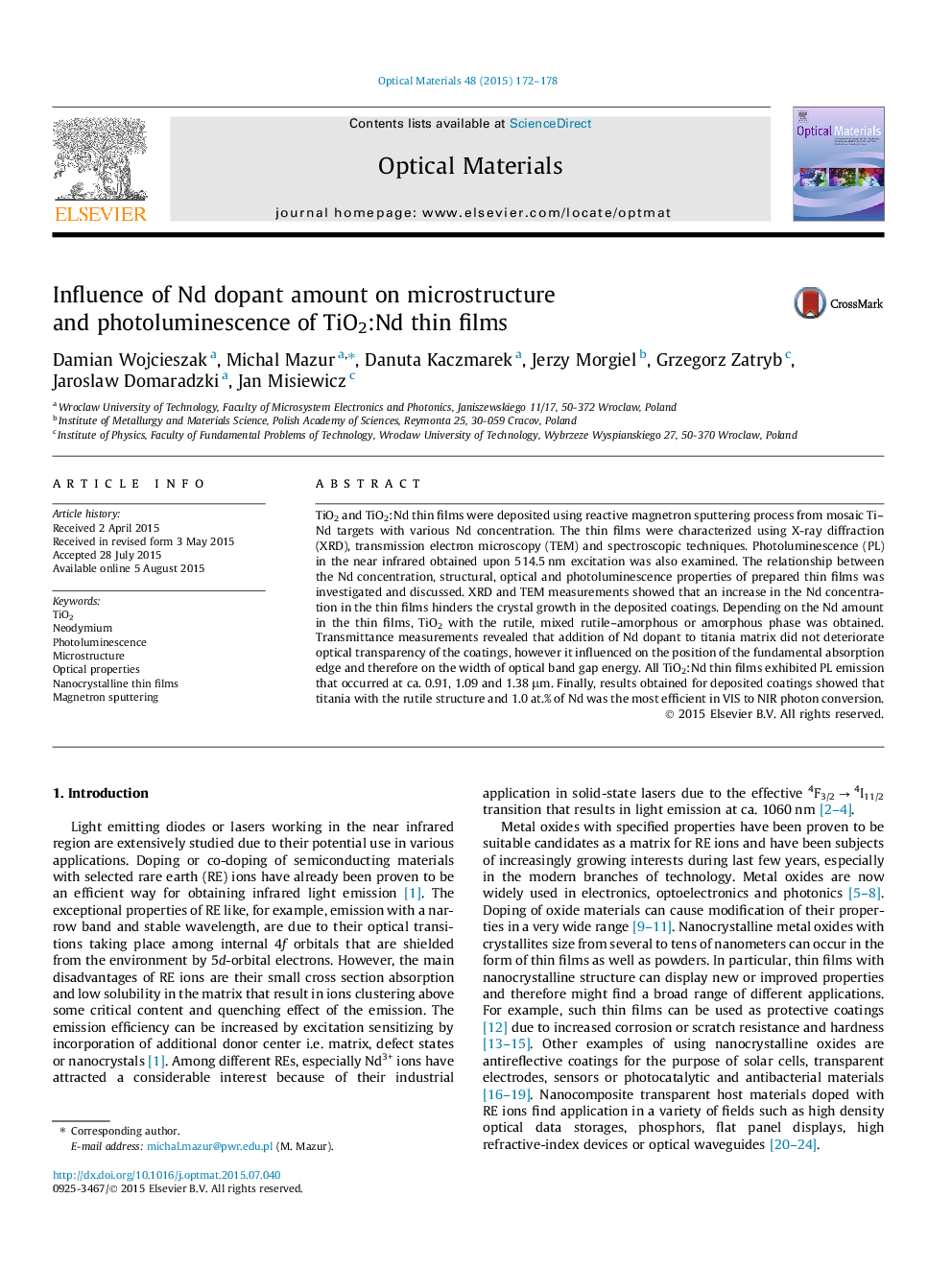| کد مقاله | کد نشریه | سال انتشار | مقاله انگلیسی | نسخه تمام متن |
|---|---|---|---|---|
| 1493790 | 1510786 | 2015 | 7 صفحه PDF | دانلود رایگان |

• TiO2 and TiO2:Nd thin films were prepared by high energy magnetron sputtering.
• Coatings were doped with neodymium in the range from 0.6 at.% to 6.1 at.%.
• Addition of Nd dopant did not deteriorate the high transparency of titanium dioxide.
• TiO2:Nd thin films exhibited PL emission that occurred at ca. 0.91, 1.09 and 1.38 μm.
• TiO2:Nd (1.0 at.%) film was the most efficient in VIS to NIR photon conversion.
TiO2 and TiO2:Nd thin films were deposited using reactive magnetron sputtering process from mosaic Ti–Nd targets with various Nd concentration. The thin films were characterized using X-ray diffraction (XRD), transmission electron microscopy (TEM) and spectroscopic techniques. Photoluminescence (PL) in the near infrared obtained upon 514.5 nm excitation was also examined. The relationship between the Nd concentration, structural, optical and photoluminescence properties of prepared thin films was investigated and discussed. XRD and TEM measurements showed that an increase in the Nd concentration in the thin films hinders the crystal growth in the deposited coatings. Depending on the Nd amount in the thin films, TiO2 with the rutile, mixed rutile–amorphous or amorphous phase was obtained. Transmittance measurements revealed that addition of Nd dopant to titania matrix did not deteriorate optical transparency of the coatings, however it influenced on the position of the fundamental absorption edge and therefore on the width of optical band gap energy. All TiO2:Nd thin films exhibited PL emission that occurred at ca. 0.91, 1.09 and 1.38 μm. Finally, results obtained for deposited coatings showed that titania with the rutile structure and 1.0 at.% of Nd was the most efficient in VIS to NIR photon conversion.
Journal: Optical Materials - Volume 48, October 2015, Pages 172–178